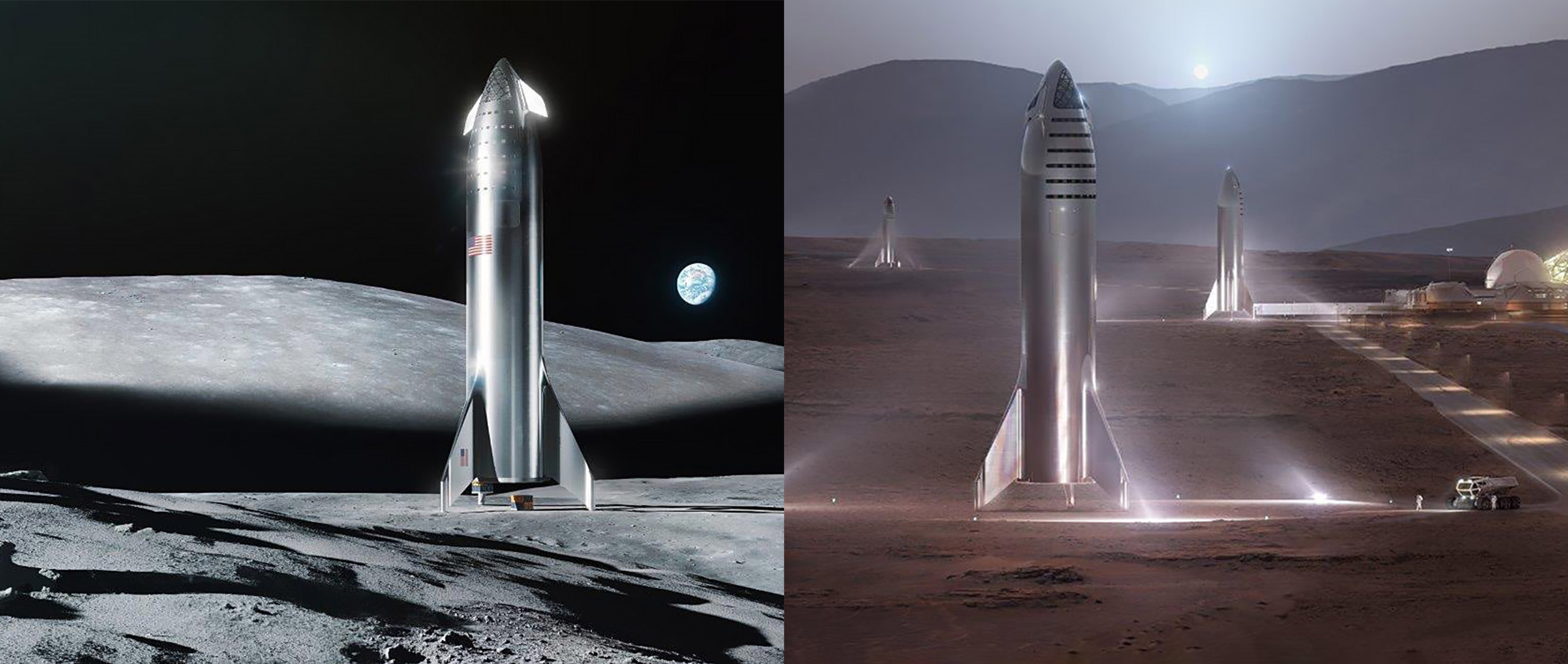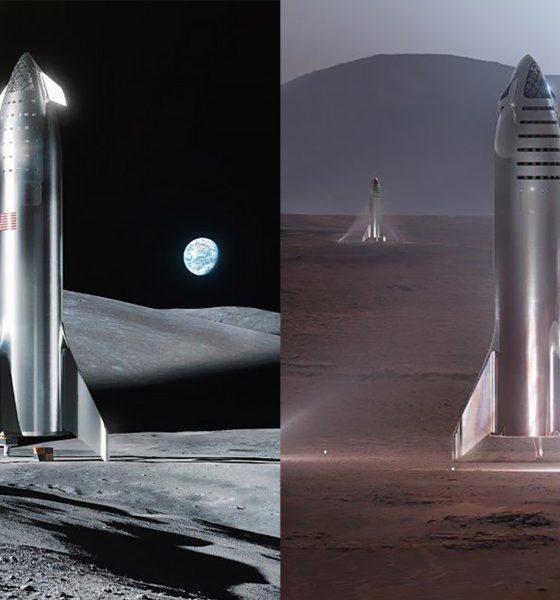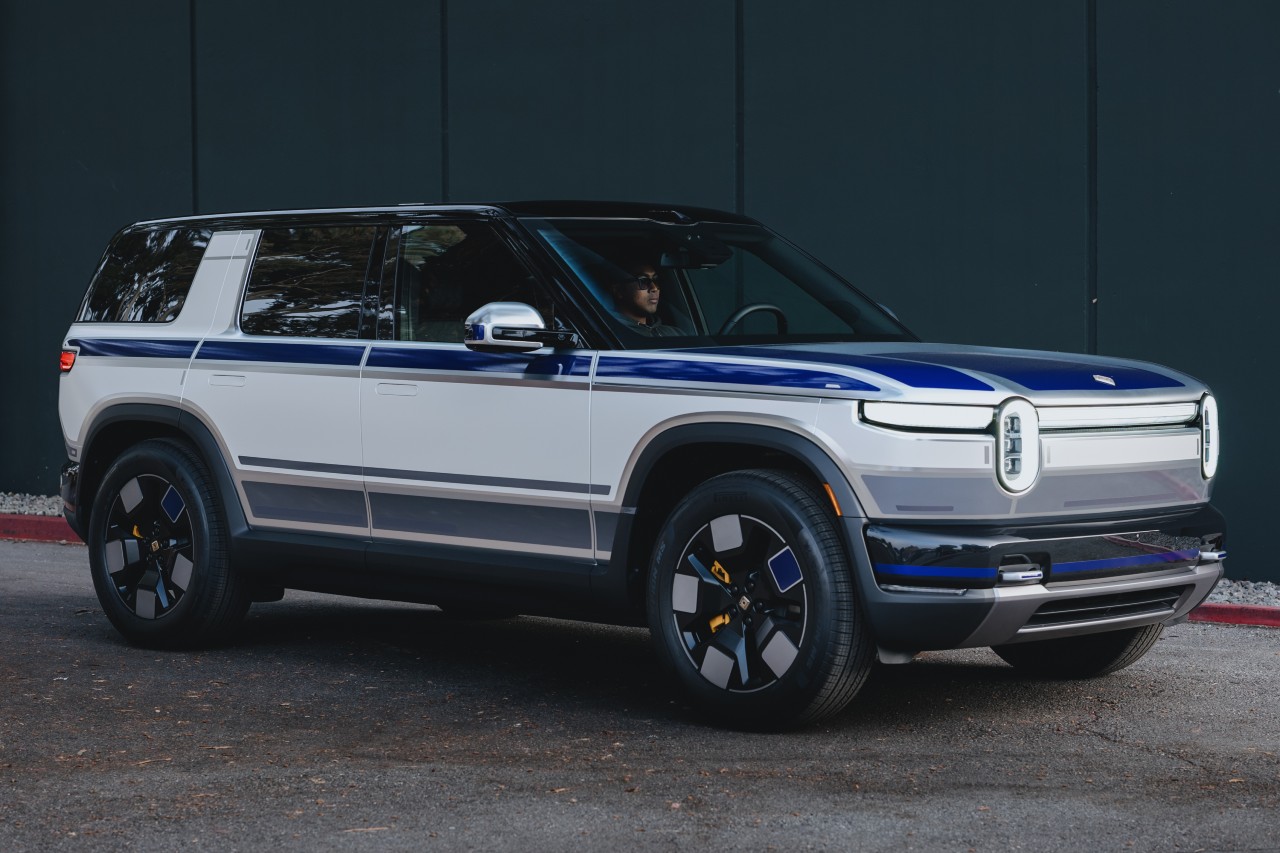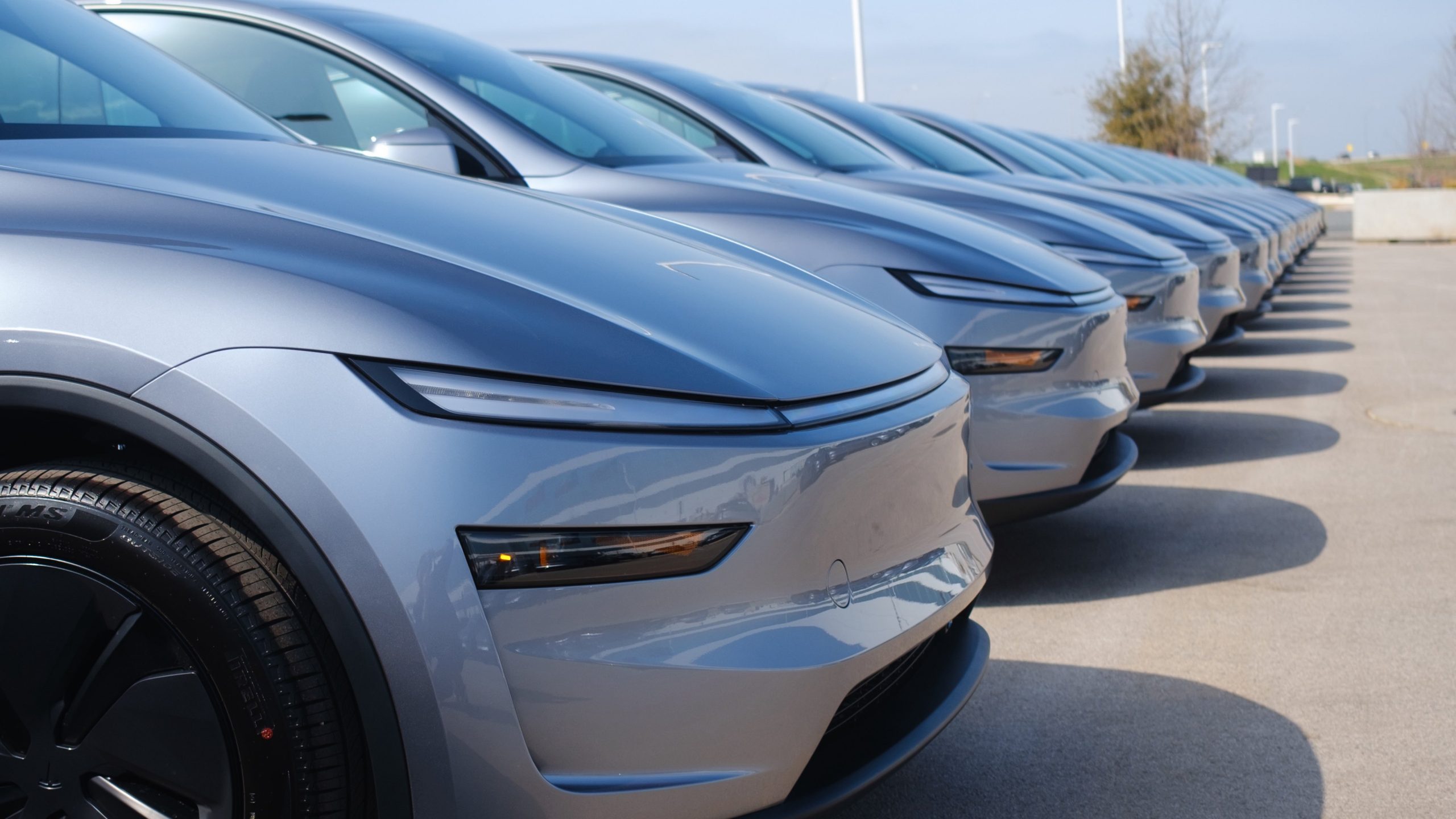

News
SpaceX’s Elon Musk says landing Starship on the Moon could be easier than convincing NASA
Speaking in an interview with TIME Magazine’s Jeffrey Kluger, SpaceX CEO Elon Musk telegraphed some clear, latent frustration with US space agency NASA, indicating that quite literally building Starship and landing it on the Moon could be easier than convincing NASA that the company is serious.
Although minor progress has been made in the last six or so months, NASA headquarters – for the most part – still effectively operates as if SpaceX’s next-generation launch vehicle plans do not exist, all while the agency is seriously considering other similarly unproven rockets with years of development remaining. In light of this frustrating inconsistency, Musk has taken to publicly acknowledging that developing, building, and launching Starship completely internally may be an easier (and faster) fight to win than attempting to convince NASA to assist in Starship development or even just be willing to use it as a launch option.
NASA assistance or support could come in any number of forms, ranging from a cost-sharing development contract, a developmental launch contract like the US Air Force’s STP-2 Falcon Heavy mission, or something as basic as publicly expressing support for the SpaceX program and a willingness to launch NASA payloads on it down the road. For now, the closest SpaceX has gotten to public NASA interest in and acknowledgment of Starship is an official Starship render posted by the Goddard Space Flight Center (GSFC).
In a sign of just how unengaged NASA is, the closest SpaceX’s Starship/Super Heavy vehicle has gotten to an acknowledgment from NASA headquarters is quite literally having an outdated BFR render subtly included in a few slideshows and documents published less than two months ago (late May 2019).
Ironically, despite the fact that Starship – first and foremost – is designed to be a giant, human-rated reusable spacecraft nominally capable of carrying dozens of astronauts into space and back, the US military appears to have been far more receptive to Starship. This is despite the fact that a BFR-heavy bid may have cost SpaceX a development contract last year. Even with the challenges such an ambitious vehicle poses, the US Department of Defense is still interested in at least discussing potential use-cases and providing input that might influence SpaceX’s final design.
Speaking in September 2018, CEO Elon Musk indicated SpaceX’s BFR (now Starship/Super Heavy) program was likely to cost ~$5B – no less than $2B and no more than $10B. However, this answer – provided off the cuff as a response to a reporter’s question – was almost certainly directed at BFR prior to a radical move from carbon composite structures and tanks to stainless steel. Since then, Musk has made some radical claims about the potential of an efficient, stainless-steel rocket, indicating that it could actually cost less to build than Falcon 9 – a far smaller rocket with a fraction of the performance.
In other words, if the potentially low cost of the vehicle itself also translates to a low development cost, SpaceX could quite feasibly develop Starship/Super Heavy from scratch with nothing more than traditional investment rounds. In the first half of 2019 alone, SpaceX has raised more than $1B in funding through three separate rounds, all of which have been described by Musk and other executives as “oversubscribed” – the demand for SpaceX equity far outstrips supply.
“If it were to take longer to convince NASA and the authorities that we can do it versus just doing it, then [SpaceX] might just do it [ourselves]. It may literally be easier to just land Starship on the moon than try to convince NASA that we can.”
— Elon Musk, July 12th, 2019, via TIME Magazine
As such, unless NASA’s attitude undergoes rapid changes, SpaceX may simply leave the agency behind when it comes to space exploration beyond low Earth orbit. In the event that quite literally developing, building, and launching a giant, stainless steel rocket and spaceship is faster, more efficient, and less disruptive than trying to convince NASA to get its foot in the door, SpaceX might have to forge its own path. If SpaceX can raise enough funding to develop its next-generation rocket independently, what comes next is anyone’s guess.
Ultimately, Musk believes that SpaceX can make that Starship Moon landing happen as few as two years from now, with the first crewed landing potentially coming as few as one or two years after that. All told, this ambitious timeline would see SpaceX land humans on the Moon – perhaps entirely commercially – as early as 2022 or 2023.
Check out Teslarati’s Marketplace! We offer Tesla accessories, including for the Tesla Cybertruck and Tesla Model 3.

News
Rivian unveils self-driving chip and autonomy plans to compete with Tesla
Rivian, a mainstay in the world of electric vehicle startups, said it plans to roll out an Autonomy+ subscription and one-time purchase program, priced at $49.99 per month and $2,500 up front, respectively, for access to its self-driving suite.

Rivian unveiled its self-driving chip and autonomy plans to compete with Tesla and others at its AI and Autonomy Day on Thursday in Palo Alto, California.
Rivian, a mainstay in the world of electric vehicle startups, said it plans to roll out an Autonomy+ subscription and one-time purchase program, priced at $49.99 per month and $2,500 up front, respectively, for access to its self-driving suite.
CEO RJ Scaringe said it will learn and become more confident and robust as more miles are driven and it gathers more data. This is what Tesla uses through a neural network, as it uses deep learning to improve with every mile traveled.
He said:
“I couldn’t be more excited for the work our teams are driving in autonomy and AI. Our updated hardware platform, which includes our in-house 1600 sparse TOPS inference chip, will enable us to achieve dramatic progress in self-driving to ultimately deliver on our goal of delivering L4. This represents an inflection point for the ownership experience – ultimately being able to give customers their time back when in the car.”
At first, Rivian plans to offer the service to personally-owned vehicles, and not operate as a ride-hailing service. However, ride-sharing is in the plans for the future, he said:
“While our initial focus will be on personally owned vehicles, which today represent a vast majority of the miles to the United States, this also enables us to pursue opportunities in the rideshare space.”
The Hardware
Rivian is not using a vision-only approach as Tesla does, and instead will rely on 11 cameras, five radar sensors, and a single LiDAR that will face forward.
It is also developing a chip in-house, which will be manufactured by TSMC, a supplier of Tesla’s as well. The chip will be known as RAP1 and will be about 50 times as powerful as the chip that is currently in Rivian vehicles. It will also do more than 800 trillion calculations every second.
Meet the Rivian Autonomy Processor.
Fast, smart, scalable and purpose-built for autonomous driving and the world of physical AI. Hitting the open road in 2026. pic.twitter.com/0wYXi5WKy7
— Rivian (@Rivian) December 11, 2025
RAP1 powers the Autonomy Compute Module 3, known as ACM3, which is Rivian’s third-generation autonomy computer.
ACM3 specs include:
- 1600 sparse INT8 TOPS (Trillion Operations Per Second).
- The processing power of 5 billion pixels per second.
- RAP1 features RivLink, a low-latency interconnect technology allowing chips to be connected to multiply processing power, making it inherently extensible.
- RAP1 is enabled by an in-house developed AI compiler and platform software
As far as LiDAR, Rivian plans to use it in forthcoming R2 cars to enable SAE Level 4 automated driving, which would allow people to sit in the back and, according to the agency’s ratings, “will not require you to take over driving.”
More Details
Rivian said it will also roll out advancements to the second-generation R1 vehicles in the near term with the addition of UHF, or Universal Hands-Free, which will be available on over 3.5 million miles of roadway in the U.S. and Canada.
More than any other feature, our owners have asked for more hands-free miles.
With Universal Hands-Free, you can now enjoy hands-free assisted driving on any road with clearly defined lanes. That’s roughly 3.5 million miles in the U.S. and Canada.
Look for it in our next… pic.twitter.com/ZFhwVzvt6b
— Rivian (@Rivian) December 11, 2025
Rivian will now join the competitive ranks with Tesla, Waymo, Zoox, and others, who are all in the race for autonomy.
News
Tesla partners with Lemonade for new insurance program
Tesla recently was offered “almost free” coverage for Full Self-Driving by Lemonade’s Shai Wininger, President and Co-founder, who said it would be “happy to explore insuring Tesla FSD miles for (almost) free.”

Tesla owners in California, Oregon, and Arizona can now use Lemonade Insurance, the firm that recently said it could cover Full Self-Driving miles for “almost free.”
Lemonade, which offered the new service through its app, has three distinct advantages, it says:
- Direct Connection for no telematics device needed
- Better customer service
- Smarter pricing
The company is known for offering unique, fee-based insurance rates through AI, and instead of keeping unclaimed premiums, it offers coverage through a flat free upfront. The leftover funds are donated to charities by its policyholders.
On Thursday, it announced that cars in three states would be able to be connected directly to the car through its smartphone app, enabling easier access to insurance factors through telematics:
Lemonade customers who own @Tesla vehicles in California, Oregon, and Arizona can now connect their cars directly to the Lemonade app! ⚡🚘
Direct connection = no telematics device needed 📵
Better customer experience 💃
Smarter pricing with Lemonade 🧠This is a game-changer… pic.twitter.com/jbabxZWT4t
— Lemonade (@Lemonade_Inc) December 11, 2025
Tesla recently was offered “almost free” coverage for Full Self-Driving by Lemonade’s Shai Wininger, President and Co-founder, who said it would be “happy to explore insuring Tesla FSD miles for (almost) free.”
The strategy would be one of the most unique, as it would provide Tesla drivers with stable, accurate, and consistent insurance rates, while also incentivizing owners to utilize Full Self-Driving for their travel miles.
Tesla Full Self-Driving gets an offer to be insured for ‘almost free’
This would make FSD more cost-effective for owners and contribute to the company’s data collection efforts.
Data also backs Tesla Full Self-Driving’s advantages as a safety net for drivers. Recent figures indicate it was nine times less likely to be in an accident compared to the national average, registering an accident every 6.36 million miles. The NHTSA says a crash occurs approximately every 702,000 miles.
Tesla also offers its own in-house insurance program, which is currently offered in twelve states so far. The company is attempting to enter more areas of the U.S., with recent filings indicating the company wants to enter Florida and offer insurance to drivers in that state.
News
Tesla Model Y gets hefty discounts and more in final sales push

Tesla Model Y configurations are getting hefty discounts and more benefits as the company is in the phase of its final sales push for the year.
Tesla is offering up to $1,500 off new Model Y Standard trims that are available in inventory in the United States. Additionally, Tesla is giving up to $2,000 off the Premium trims of the Model Y. There is also one free upgrade included, such as a paint color or interior color, at no additional charge.
NEWS: Tesla is now offering discounts of up to $1,500 off new Model Y Standard vehicles in U.S. inventory. Discounts of up to $2,000 are also being offered on Model Y Premiums.
These discounts are in addition to the one free upgrade you get (such as Diamond Black paint) on… pic.twitter.com/L0RMtjmtK0
— Sawyer Merritt (@SawyerMerritt) December 10, 2025
Tesla is hoping to bolster a relatively strong performance through the first three quarters of the year, with over 1.2 million cars delivered through the first three quarters.
This is about four percent under what the company reported through the same time period last year, as it was about 75,000 vehicles ahead in 2024.
However, Q3 was the company’s best quarterly performance of all time, and it surged because of the loss of the $7,500 EV tax credit, which was eliminated in September. The imminent removal of the credit led to many buyers flocking to Tesla showrooms to take advantage of the discount, which led to a strong quarter for the company.
2024 was the first year in the 2020s when Tesla did not experience a year-over-year delivery growth, as it saw a 1 percent slide from 2023. The previous years saw huge growth, with the biggest coming from 2020 to 2021, when Tesla had an 87 percent delivery growth.
This year, it is expected to be a second consecutive slide, with a drop of potentially 8 percent, if it manages to deliver 1.65 million cars, which is where Grok projects the automaker to end up.
Tesla will likely return to its annual growth rate in the coming years, but the focus is becoming less about delivery figures and more about autonomy, a major contributor to the company’s valuation. As AI continues to become more refined, Tesla will apply these principles to its Full Self-Driving efforts, as well as the Optimus humanoid robot project.
Will Tesla thrive without the EV tax credit? Five reasons why they might
These discounts should help incentivize some buyers to pull the trigger on a vehicle before the year ends. It will also be interesting to see if the adjusted EV tax credit rules, which allowed deliveries to occur after the September 30 cutoff date, along with these discounts, will have a positive impact.








